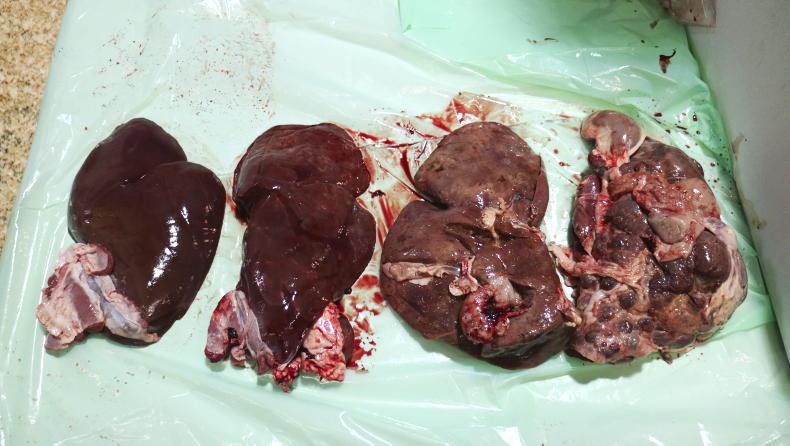Liver fluke
The Department of Agriculture’s liver fluke forecast shows a high risk of fluke infestation in most highly populated sheep areas. The map gives a good visual representation of the highest risk areas.
The Agri-Food and Biosciences Institute (AFBI) also released their liver fluke forecast earlier this month, and this shows that despite lower rainfall levels in May to September compared to 2023 there remains a high risk of liver fluke infestation in sheep and cattle.
Both forecasts highlight the importance of selecting a product which is effective against both immature and mature forms of the liver fluke parasite life cycle.
They also caution farmers to be mindful of the risk of emerging resistance issues to fluke treatments, with resistance to triclabendazole identified in some flocks where this product was used almost exclusively for many years.
The treatment programme will differ across all farms depending on the risk profile. The AFBI forecast says that out-wintered sheep may need one or two treatments in autumn depending on the severity of the risk, with a possible follow-up in January and a treatment effective against adult fluke parasites in early spring.
Where there is a high risk, then a treatment programme should be developed in consultation with your vet as the overuse of flukicides where not warranted will increase the rate of resistance developing.
The health status of livers of slaughtered sheep can provide invaluable information as to the presence of live fluke parasites, while any fallen animals should be sent for post mortem.
Faecal egg counts can be used strategically later in the season but are not readily suitable where acute fluke is the challenge.
Weather checks
The sub-zero temperatures in recent days and previous week’s heavy fog in many areas is casting a spotlight on ensuring all vehicles, including trailers, are in a good state for transporting animals.
All lights should be working adequately, and it is important to check the thread depth on tyres. An important task that is often overlooked is to check for wear in the trailer hitch or ball hitch on the towing vehicle.
This is critical in older vehicles and also in newer vehicles doing a lot of trailer work. Braking mechanisms should be checked annually or more often where heavy loads are towed or high mileage is covered.
